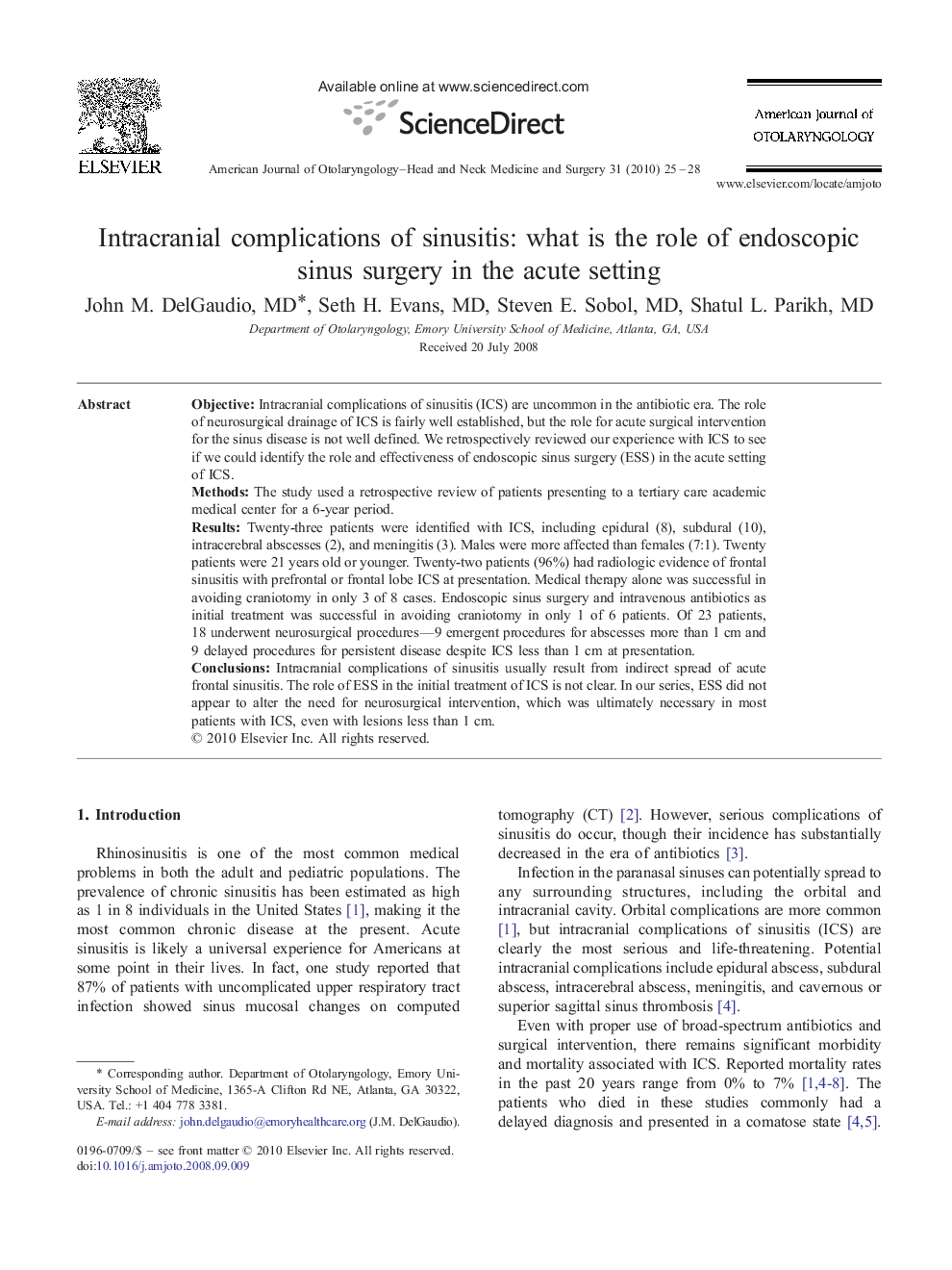| Article ID | Journal | Published Year | Pages | File Type |
|---|---|---|---|---|
| 4103715 | American Journal of Otolaryngology | 2010 | 4 Pages |
ObjectiveIntracranial complications of sinusitis (ICS) are uncommon in the antibiotic era. The role of neurosurgical drainage of ICS is fairly well established, but the role for acute surgical intervention for the sinus disease is not well defined. We retrospectively reviewed our experience with ICS to see if we could identify the role and effectiveness of endoscopic sinus surgery (ESS) in the acute setting of ICS.MethodsThe study used a retrospective review of patients presenting to a tertiary care academic medical center for a 6-year period.ResultsTwenty-three patients were identified with ICS, including epidural (8), subdural (10), intracerebral abscesses (2), and meningitis (3). Males were more affected than females (7:1). Twenty patients were 21 years old or younger. Twenty-two patients (96%) had radiologic evidence of frontal sinusitis with prefrontal or frontal lobe ICS at presentation. Medical therapy alone was successful in avoiding craniotomy in only 3 of 8 cases. Endoscopic sinus surgery and intravenous antibiotics as initial treatment was successful in avoiding craniotomy in only 1 of 6 patients. Of 23 patients, 18 underwent neurosurgical procedures—9 emergent procedures for abscesses more than 1 cm and 9 delayed procedures for persistent disease despite ICS less than 1 cm at presentation.ConclusionsIntracranial complications of sinusitis usually result from indirect spread of acute frontal sinusitis. The role of ESS in the initial treatment of ICS is not clear. In our series, ESS did not appear to alter the need for neurosurgical intervention, which was ultimately necessary in most patients with ICS, even with lesions less than 1 cm.
